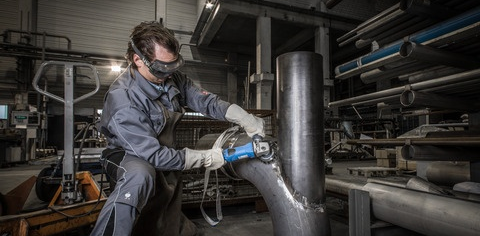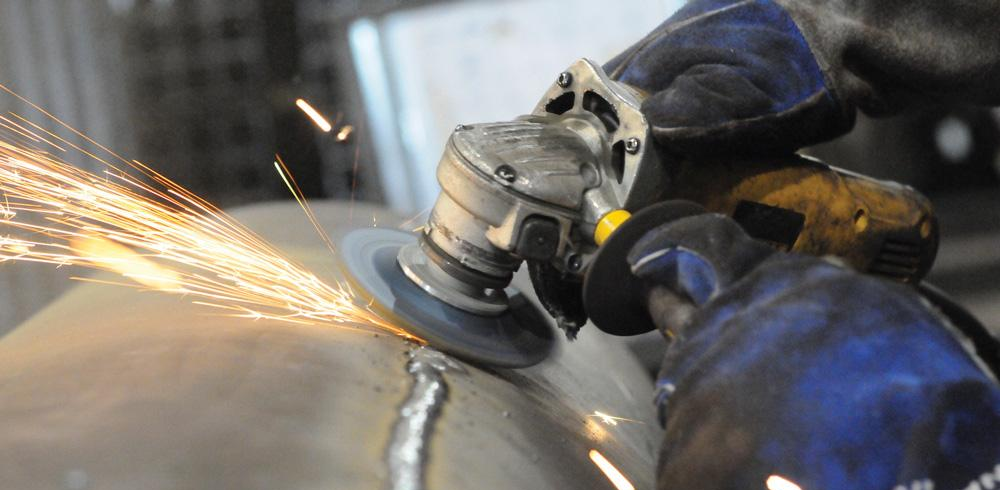Pipeline welds are critical for ensuring the integrity of oil and gas pipelines. Proper preparation and cleaning of pipeline welds is crucial to ensure the weld is strong and durable. Welding on pipelines requires specific techniques, tools, and expertise to ensure quality work is done. In this article, we will explore tips for preparing and cleaning pipeline welds.
Importance of Preparing and Cleaning Pipeline Welds
The quality of the weld is directly related to the preparation and cleaning of the joint prior to welding. Poor preparation and cleaning can lead to defects in the weld that can cause leaks, cracks, and other issues. This can result in costly repairs and downtime for the pipeline. Therefore, it is important to follow proper procedures for preparing and cleaning pipeline welds to ensure the weld is strong and durable.
Tools for Preparing and Cleaning Pipeline Welds
- Grinding Wheel
A grinding wheel with a 1/8-inch grinding wheel is useful for grinding the edges of the joint. It is important to choose a grinding wheel that is suitable for the material being welded.
- Flap Disc
A flap disc with a 60 grit is useful for grinding the weld bead. It is important to choose a flap disc that is suitable for the material being welded.
- Wire Cup Brush
A wire cup brush is useful for removing surface contaminants such as rust and dirt. It is important to choose a wire cup brush that is suitable for the material being welded.
- Welding Gauge
A welding gauge is useful for checking the fit-up of the joint. It can be used to measure the gap between the joint and the thickness of the material being welded.
- Chipping Hammer
A chipping hammer is useful for removing slag and spatter from the weld. It is important to choose a chipping hammer that is suitable for the material being welded.
- Solvent or Degreaser
A solvent or degreaser is useful for cleaning the weld after it has been ground. It is important to choose a solvent or degreaser that is suitable for the material being welded.
Tips for Preparing Pipeline Welds
- Remove all surface contaminants
Before starting to prepare the joint, it is important to remove all surface contaminants such as rust, paint, oil, and dirt. This can be done using a wire cup brush or a flap disc. The wire cup brush is useful for removing heavy rust, while the flap disc is useful for removing paint and other surface contaminants.
- Grind the edges of the joint
After removing surface contaminants, the edges of the joint should be ground to remove any irregularities. This is important because irregularities can cause the weld to be weaker in those areas. A grinding wheel with a 1/8-inch grinding wheel is recommended for this task.
- Chamfer the edges of the joint
Once the edges are ground, they should be chamfered to create a V-shaped groove. This will help the weld penetrate deeper into the joint, resulting in a stronger weld. The chamfer should be approximately 45 degrees and should be uniform on both sides of the joint.
- Check for fit-up
Before welding, it is important to ensure that the joint is properly aligned and the fit-up is good. This can be done using a welding gauge or by visually inspecting the joint. Any misalignment or poor fit-up should be corrected before welding.
Tips for Cleaning Pipeline Welds
- Remove all slag and spatter
After welding, the weld should be cleaned to remove any slag or spatter. This can be done using a wire brush or a chipping hammer. The slag and spatter can weaken the weld if left on the surface.
- Grind the weld bead
Once the slag and spatter are removed, the weld bead should be ground to create a smooth surface. This will help prevent stress concentrations and ensure that the weld is uniform in thickness. A a 60-grit flap disc is recommended for this task.
- Check for defects
After grinding, the weld should be inspected for any defects such as cracks, porosity, or lack of fusion. Defects can weaken the weld and should be repaired before the pipeline is put into service.
- Clean the weld
Finally, the weld should be cleaned to remove any remaining contaminants such as oil, dirt, or grease. This can be done using a solvent or degreaser. The weld should be completely dry before it is painted or coated.
Conclusion
Proper preparation and cleaning of pipeline welds is critical to ensure the weld is strong and durable. The tips discussed in this article can help ensure that the weld is properly prepared and cleaned. The tools mentioned can help make the process easier and more efficient. Following these tips and using the right tools can help ensure that pipeline welds are of high quality and meet industry standards.


